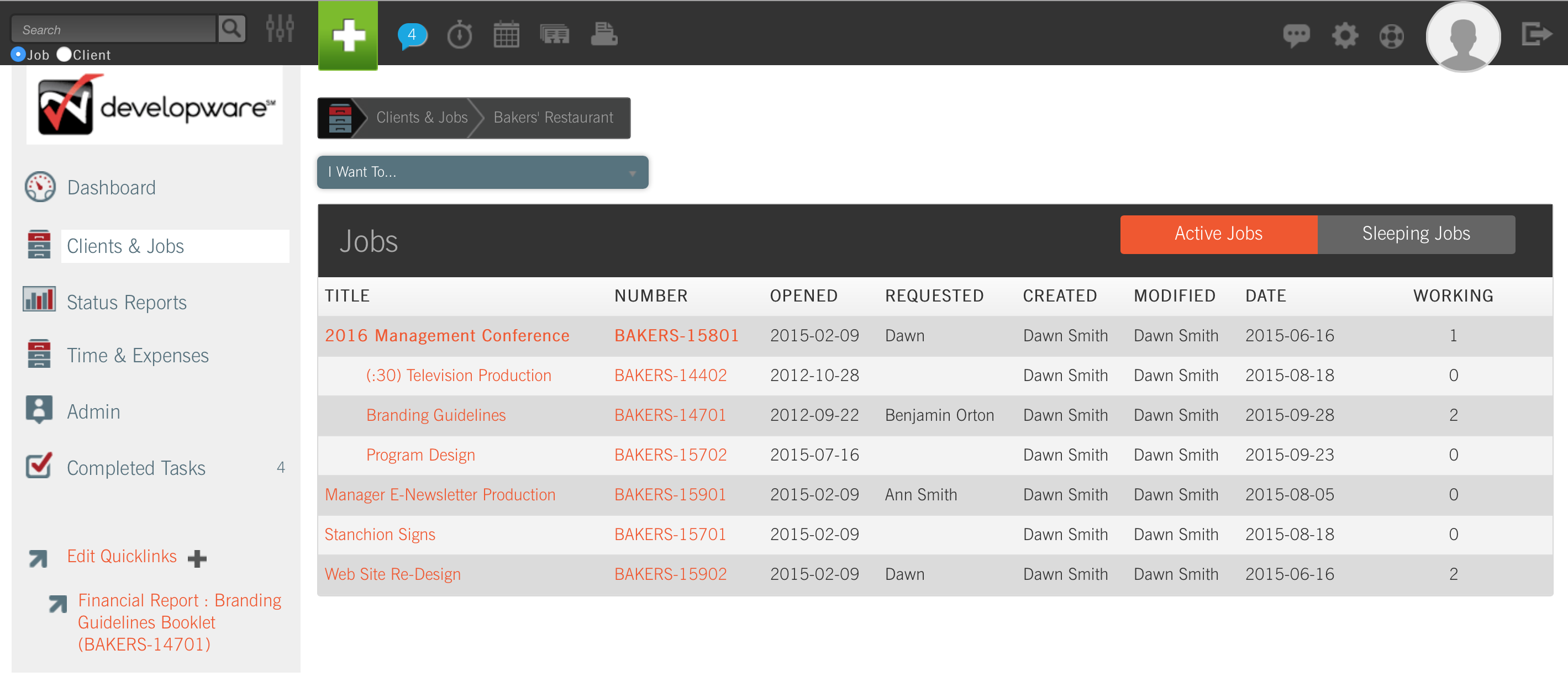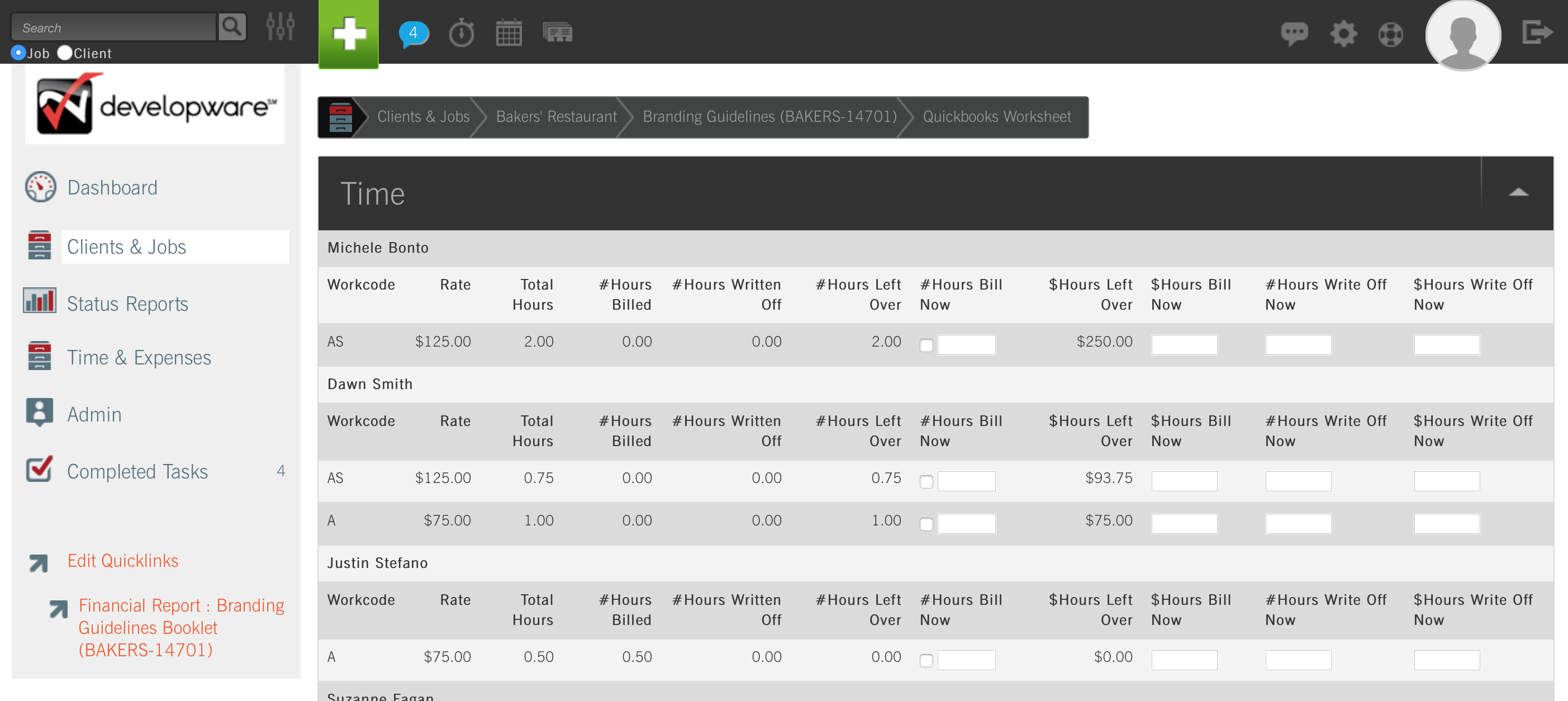Preparing a QuickBooks Worksheet: Employee Expenses
PREPARING A QUICKBOOKS® WORKSHEET
EMPLOYEE EXPENSES
First, navigate to the job by going to Clients & Jobs — Client — Job One Sheet. Once inside the job folder, select Prepare QuickBooks Worksheet from the I Want To: drop-down menu.

NOTE: You must have Permission to Create a QuickBooks Worksheet. To grant access, via the Manage Permissions interface, a System Administrator must go to Admin — System Administration — Manage Permissions. S(he) can then specify which Employee(s) should be allowed to Create QuickBooks Worksheet by entering the name(s) in the field provided.
TIP: Mirror your CurrentTrack and QuickBooks Client names to avoid duplicate account creation.
Once an Employee has both Submitted and Completed his/her individual Expense Report, the corresponding dollar figures will be displayed on the QuickBooks Worksheet of the job(s). If you need to modify Worksheet Expenses, go to Admin — Agency Administration — Manage Expense Reports. Choose the Employee from the drop-down menu and enter the Date for which modifications must be made. Once you click Edit Expense Report, all line items dated as specified will appear. Make any necessary changes; click Submit. Unlike when an Employee enters his/her own expenses, CurrentTrack will allow you, as a user with Permission, to submit an Expense Report containing a Sleeping job. Confirm that your billing records are accurate.
When you’re ready to send the Expense(s) to QuickBooks, check the box(es) at the end of the row(s). They’ll then be ready and waiting once you launch the Connector.

Traditionally, the Accounting Manager has been required to run an [Agency] Expense Report at month’s end, for example, and mark Employee Expenses as Reported. This is no longer the case with the QuickBooks Connector. Any Expenses that are sent to QuickBooks, and appear in the History of the job within CurrentTrack, will be automatically flagged as Reported in your database. In addition, the Expenses will be removed from the Employee’s [Edit] Expense Report screen, leaving only un-Reported items in the form.
Lastly, review the media expenses associated with the job and determine what to bill. Click here for more information. If there are no media expenses to review, sync the Worksheet. After submitting the Worksheet within CurrentTrack, it’s not automatically copied into QuickBooks. It’s simply ready for QuickBooks retrieval. Launch the QuickBooks Connector, via either the desktop icon or your Start menu, and click Sync. Progress can be monitored within the Current Sync Progress tab.


By default, CTEXPENSE is the Item Code associated with Employee Expense Report values transferred to QuickBooks. You can overwrite the Item Code with any Code you’d like, but the default Code will still appear in the Billing Entry created in CurrentTrack. For example:


Once you’ve successfully finished the QuickBooks sync, navigate back to the job within CurrentTrack by going to Clients & Jobs — Client — Job One Sheet — I Want To: Prepare QuickBooks Worksheet. At the bottom of your Worksheet, or by clicking View QuickBooks Worksheet History in the job’s I Want to: drop-down menu, you can view everything you’ve submitted and what remains to be sent to QuickBooks at a later date.
NOTE: You must have Permission to View QuickBooks Worksheet History. To grant access, via the Manage Permissions interface, a System Administrator must go to Admin — System Administration — Manage Permissions. S(he) can then specify which Employee(s) should be allowed to View QuickBooks Worksheet History by entering the name(s) in the field provided.

The job’s CurrentTrack Billing History will now mirror the Invoices that appear in QuickBooks, via a corresponding Billing Entry. To view a job’s Billing History, go to Clients & Jobs — Client — Job One Sheet — I Want To: View Billing History. Modifications made to existing Billing Entries (e.g. Amount modified) will not be reflected in their corresponding QuickBooks Invoices.



